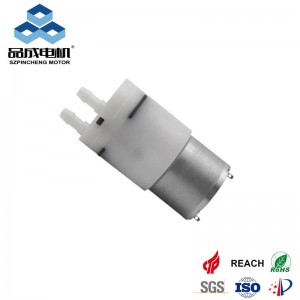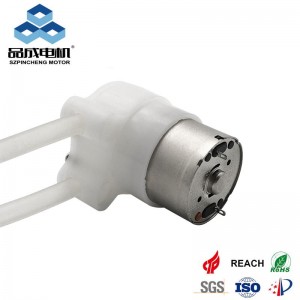When it comes to selecting the appropriate air pump for your application, the choice between a micro DC air pump and a micro brushless air pump can be a critical decision. Both pump types offer unique advantages, and understanding the key differences can help you make an informed choice that aligns with your specific requirements.
Micro DC Air Pumps
Micro DC air pumps are a popular choice for a wide range of applications due to their simplicity and cost-effectiveness. These pumps utilize a traditional DC motor, which is directly connected to the pump mechanism, typically a diaphragm or rotary vane. The simplicity of the DC motor design often translates to a lower overall cost for the pump.
Advantages of Micro DC Air Pumps:
- Affordability: Micro DC air pumps are generally more cost-effective compared to their brushless counterparts.
- Straightforward Design: The direct connection between the DC motor and the pump mechanism results in a simpler, more streamlined design.
- Widespread Availability: Micro DC air pumps are widely available from various manufacturers, making them easily accessible.
Limitations of Micro DC Air Pumps:
- Lower Efficiency: DC motors tend to have lower energy efficiency compared to brushless motors, which can impact the overall power consumption and performance of the pump.
- Shorter Lifespan: The mechanical wear and tear on the DC motor and pump components can lead to a shorter overall lifespan compared to brushless air pumps.
- Noise and Vibration: DC air pumps may generate more noise and vibration due to the direct coupling of the motor and pump mechanism.
Micro Brushless Air Pumps
Micro brushless air pumps, on the other hand, utilize a more advanced brushless DC (BLDC) motor design. These pumps feature a permanent magnet rotor and an electronic commutation system, which eliminates the need for physical brushes. This design offers several advantages over traditional DC air pumps.
Advantages of Micro Brushless Air Pumps:
- Higher Efficiency: Brushless motors are inherently more energy-efficient, resulting in lower power consumption and improved overall performance.
- Longer Lifespan: The absence of physical brushes and the electronic commutation system contribute to a longer operational lifespan for micro brushless air pumps.
- Reduced Noise and Vibration: The non-contact nature of the brushless motor design leads to quieter operation and lower vibration levels.
- Improved Control: Brushless motors offer more precise control over speed and torque, allowing for better regulation of air flow and pressure.
Limitations of Micro Brushless Air Pumps:
- Higher Initial Cost: Micro brushless air pumps typically have a higher upfront cost compared to their DC counterparts.
- Increased Complexity: The electronic control system and commutation mechanism add a layer of complexity to the overall design of micro brushless air pumps.
When selecting between a micro DC air pump and a micro brushless air pump, it's essential to consider the specific requirements of your application, such as performance, efficiency, noise, and cost. Factors like the operating environment, fluid characteristics, and the need for precise control can all influence the optimal choice.
By understanding the key differences between these two pump types, you can make an informed decision that aligns with your project's goals and ensures the best possible performance and reliability for your application.
you like also all
Read More News
Post time: Aug-20-2025




